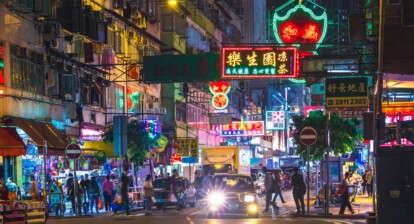Mainstream economists would expect consumers to always seek the cheapest good, regardless of its quality. People, however, are increasingly looking for purchases that, although more expensive, respect nature and the people around them. Are they demonstrating, with their money, their preference for a different, fairer, global trade model? (Murray & Raynolds, 2007) Or are people consuming a new mainstream brand?
The Fair Trade Movement is a global social movement, a movement of many movements (Low & Davenport, 2006) composed of different networks of producers, companies, shoppers, advocates, and organizations collaborating with the aim of building a more equitable model of trade. Born in the 1940s but developed in the 1960s, it emerged from the ambiguities and ambivalences of globalization, with the aim of spreading and supporting a fair trade between the communities of producers in the global South and the developed countries. The movement presents a wide set of actions repertoire, acting through both market-based strategies and various attempts to raise people’s awareness stimulating a conscious consumer behaviour (Moore, 2004), also through celebrities and mainstream media (Harris & McNamara, 2021). World Shops, or Fair Trade shops, have played (and still play) a crucial role in the Fair Trade movement. Through those channels it enhances a common frame about how everyone can easily contribute to developing a more fair and sustainable commerce. It encourages people to take part in the collective action by solely consuming in an “ethical way”, without the need of engaging in high levels of commitment, or risk, actions, lowering the threshold for the participation. Though, the choice of acting within the market structures raises the question about the real anti-hegemonic aim of the movement (Low & Davenport, 2006).
When reflecting about the potential of a social movement to change the world, we should consider the structures in which the movement is embedded (Kriesi, 2004), and the extent to which it reflects them. The Fair Trade movement does not challenge consumerism per se, being itself fostered by the act of buying, but it encourages consumers to purchase in a sustainable, conscious, ethical way (Low & Davenport, 2006).
However, to assess the effect of a social movement is an arduous task (Della Porta & Diani, 2021). Though, this peculiar example provides the possibility – to a certain extent – of measuring the impact of the Fair Trade movement, since the number of shops and sells of fair trade-labelled products is countable, and the shift in the demand for crafts and food is measurable. The rise of both is a positive sign of the movement’s success, that was able to unify under a common prognostic frame the share of consumers.
On the other side, the 9.8 billion retail sales value of Fair trade products in 2018 represents less than 1% of the value of international trade in that year.
(Harris & McNamara, 2021)
Furthermore, concerns about co-option and lowering of the standards for labelling the goods as “fair” are combined with the apprehension that mainstream companies might not protect the real Fair Trade ideals and the supply chains if consumers’ preferences change, or the economic conditions become less favourable (Harris & McNamara, 2021). The future indeed appears to be cloudy given the rise of several problematic issues such as the energetic, economic, environmental, post pandemic crises, that may change the priorities of the consumers and the perception of what is most relevant in the political debate.
Therefore, the shift towards mainstream consumerism has contributed to make Fair Trade products famous around the world, implementing the idea that everyone can participate in the construction of a fair market model by consciously channelling daily consumption. The movement has, hence, gone far with respect to where it began, but did it change the world? Or did the world change the movement?

The social, political, and economical environments influence the social movements’ possibility to act (Kriesi, 2004) by imposing the strength of external factors such as the macro historical elements (Taylor & Van Dyke, 2004) aforementioned. In addition, the composited, layered, wide structure of the movement plays a role in determining the tactical repertoire a social movement needs to remain alive and expand. The increasingly globalized, hyper-consumerist and individualistic society partly transformed the Fair Trade movement into a mainstream form of consumption, raising the question about whether the movement is still working for an equal model of trade or if it got branded.Social movements can play a role in changing the world by shedding light on the relevance of a topic (Della Porta & Diani, 2021) and by encouraging people to challenge whatever issue is frustrating them, with the support of a broader group of individuals with which they share beliefs, feelings and characteristics. But the extent to which this process is one-way is a matter we should take into consideration. A social movement has the potential of influencing a society, but the fact that it is embedded in a social structure will make the influential mechanism two-way, making harder disentangling causes and effects.
Reference
Della Porta, D. and Diani, M. (2020) The Effects of Social Movements, In D. della Porta and M. Diani, Social Movements: an Introduction. Oxford: Wiley Blackwell.
Harris, J., and McNamara, K. (2021). Social Movement Lessons from the Fair Trade Movement. Science Institute.
Kriesi, H. (2004) Political Context and Opportunity In D.A. Snow, S.A. Soule, and H. Kriesi (Eds), The Blackwell Companion to Social Movements, Oxford, Blackwell Publishing Ltd, pp. 67-90.
Low, W. and Davenport, E. (2006) ‘Mainstreaming fair trade: adoption, assimilation, appropriation’, Journal of Strategic Marketing, 14:4, 315 – 327 To link to this article: DOI: 10.1080/09652540600947912.
Moore, G. (2004). The fair trade movement: Parameters, issues and future research. Journal of business ethics, 53(1), 73-86.
Murray, D. L., and Raynolds, L. T. (2007). Globalization and its antinomies: Negotiating a Fair Trade movement. In Fair Trade (pp. 19-30). Routledge.
Taylor, V., & Van Dyke, N. (2004). ‘Get up, stand up’: Tactical repertoires of social movements. In D.A. Snow, S.A. Soule, and H. Kriesi (Eds), The Blackwell Companion to Social Movements, Oxford, Blackwell Publishing Ltd, pp. 262-293.
Wilkinson, J. (2007). Fair trade: Dynamic and dilemmas of a market oriented global social movement. Journal of consumer policy, 30(3), 219-239.







